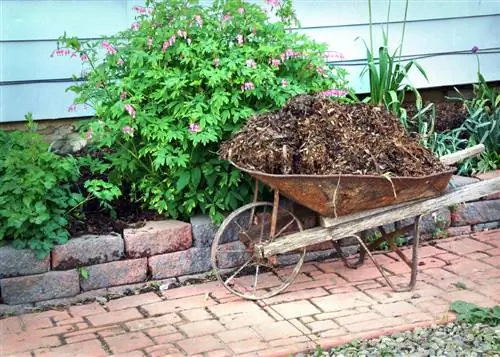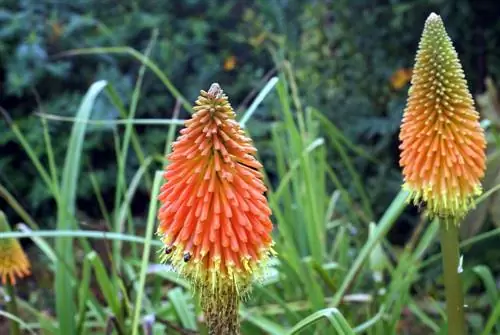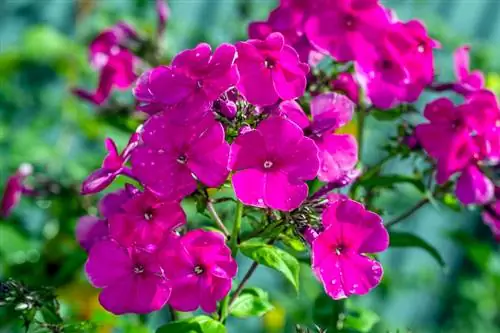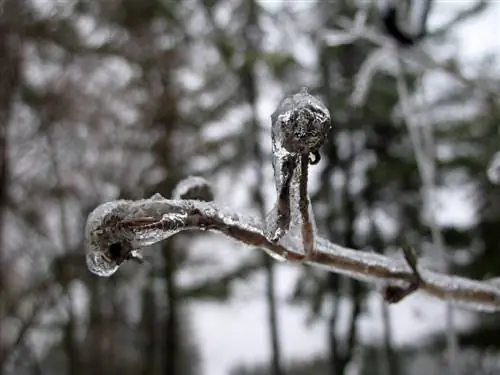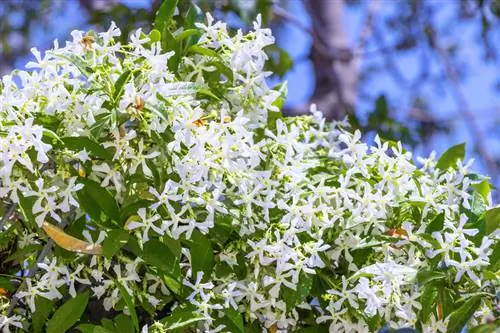- Author admin [email protected].
- Public 2023-12-16 16:46.
- Last modified 2025-01-23 11:20.
The Bleeding Heart, also popularly known as the Flaming Heart or Mary's Heart, belongs to the poppy family. The perennial with the eye-catching, two-tone pink and white flowers is very easy to care for, provided the site conditions are right. The bleeding heart is also hardy, only the tender shoots in spring are very sensitive to frost and therefore need to be protected.
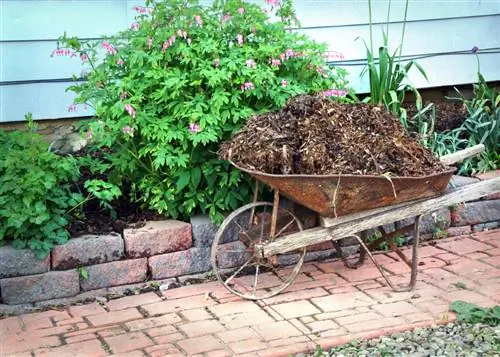
Is Bleeding Heart hardy and how do you protect it in winter?
The bleeding heart is hardy and retreats into its rhizomes after flowering. The yellow leaves can be cut off and the root area covered with compost or leaves. In spring, protect the frost-sensitive shoots from late frosts by covering them with brushwood or leaves.
Wintering bleeding heart outdoors
After flowering, the plant's leaves turn yellow and it retreats into its underground rhizomes. In this way, the bleeding heart prepares for winter and essentially no longer needs any further protection. However, you can cut back the yellow leaves - but not before the perennial has retreated, otherwise it will be weakened - and cover the root area with compost and / or leaves. The latter also has the advantage that the plant is supplied with additional nutrients.
Protect shoots from frost in spring
Although the perennial itself is hardy, the young shoots in spring are very sensitive to frost. If there are late frosts in spring, the plants should be protected by a cover (e.g. brushwood or leaves).
Overwintering bleeding heart in the pot
The situation is different with bleeding hearts cultivated in pots. Since the roots in the planters risk freezing quickly, you should wrap the pot with a fleece or a raffia mat and cover the substrate with brushwood, leaves or compost. Alternatively, wintering under cold house conditions is also possible.
- Place the Bleeding Heart in the pot in the house or greenhouse.
- Choose a cool, but frost-free and bright place.
- Temperatures around 10 to 12 °C are optimal.
- Possible locations include the stairwell or the (not very heated) bedroom.
- Water the Bleeding Heart occasionally.
- Fertilization is not necessary.
- The plants can go outdoors again from mid-May - even earlier with protection.
Tip
Yellow leaves after flowering are not a sign of illness, but normal - the plant is already getting ready for winter. You can fill the gap in the bed with later-blooming, annual flowering plants - otherwise the border could look quite bare in mid-summer.

